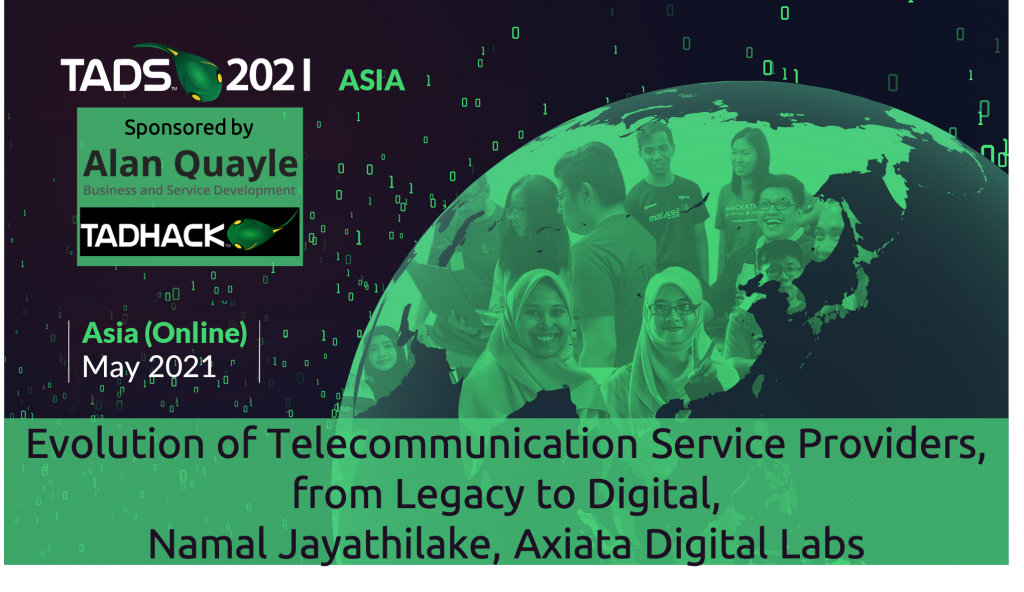Video and Slides
Outline: Evolution of Telecommunication Service Providers, from Legacy to Digital
Namal Jayathilake, VP Engineering – Emerging Technologies, Axiata Digital Labs
- Why Telcos need to be digitally enabled
- Typical challenges of a traditional Telco
- The evolution of traditional telco – Technology architecture evolution
- The evolution of traditional telco – Role of tech teams in a digital Telco
- Emerging digital business models and how to leverage those
Presentation Review
You can ask Namal questions in the comments section of this weblog.
As described in the keynote provided by Sammani Kusaladharma on “Accelerating Women Tech inclusion with effective usage of Telco API”, and the presentation by Sandarenu Madan Arachchige on “CPaaS Analytics – Insights into the Long Tail”, Axiata has made great strides in its evolution; creating country-wide innovation ecosystems.
Namal sets out the challenge facing telcos with customers wanting ‘more for less’ across their services because of global competition. And legacy suppliers equally challenged in the evolution of their business from the same competition.
Namal eloquently reviews the challenges telcos face, given a classic waterfall model for new product development, and a complex BSS ecosystem. Resulting in change requests and new systems for any new service or feature. This complexity means innovation often grinds to a halt compared to the competition.
While the competition are software, API, and micro-service-centric; with loose coupling enabling continuous integration / continuous development. We witness this all the time in using Google’s online services, new features appear, often with no heralding / marketing, you simply notice X is now possible. The old arguments on reliability and performance at scale generally no longer apply.
Namal shows how telcos can implement a 2 speed IT stack, to maintain their uniqueness, while copying what’s working in the competition. This is enabled through the Axiata Digital Labs Digital Telco Enabler (ADL-DTE).
But technology change alone does not solve the problem, people and processes must also change. Namal reviews the other steps required in a software-centric mindset, that is creating solutions not buying boxes, using agile process, focus on user experience. And leadership to protect and enable the new technologies, people and processes. Anthony Rodrigo‘s role as CIO in my opinion was critical to the success of Ideamart in keeping the ‘anti-bodies’ away from the new ways of working.
Namal then reviews the business models made possible. In my experience, while technology and processes are both necessary. The thing that makes the difference between success and failure is people. Telcos’ culture is extremely strong, and this makes change challenging. The people aspects, and protecting those people is a critical aspect in the evolution of telcos.
Thank you Namal for an eloquent review of the evolution of Telecommunication Service Providers, from legacy to digital.


Hi Namal, thanks for an excellent review of the evolution of telcos. I especially appreciate you covering the importance of people, process and technology. I have some questions:
1) B2B has been a challenge for some telcos. In some cases it requires dedicated channel managers within the telco to help structure the offers to work for the channels and their enterprise customers. Have you seen that? Or has the marketplace proven adequate?
2) What B2B APIs / Offers would you recommend a telco initially focus on, what is likely to be successful?
3) How long has the ADL-DTE project been running? And do you think there is an end-date for this project?
4) What has been some of the greatest challenges you’ve faced in ADL-DTE’s implementation?